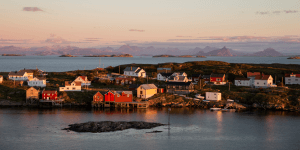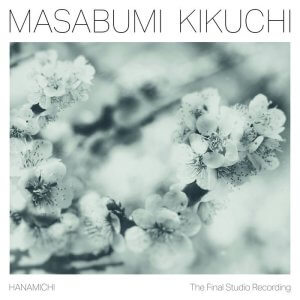The Weekly Mash, Friday 7th November
About time
1 Sullivan’s Cove
Anniversaries are markers of significance which say, ‘this is where we are, what we have done, and where we are going.’ Occasionally, the anniversary has a deeper resonance and speaks of something greater than a date or age statement. The release of two 25 year old whiskies from Tasmania’s Sullivan’s Cove is one of those. These are not simply the oldest release from the distiller, but the the oldest single malts from Australia – possibly ever.
There is a lot to unpack here. The story of a producer who started at the beginning of Tasmania’s (and Australia’s) revival of whisky-making; the Sullivan’s Cove approach to whisky creation, and the implications of this for the wider Australian industry.
The whisky world was a different place 31 years ago. The idea of whisky being made outside the classic countries was met with a degree of bemusement. Australia’s last distillery had closed in 198X, small-scale production was unknown, Tasmania hadn’t had a distillery for 1XX years..
On one hand this gives a distiller a degree of latitude in terms of approach. If no-one has an opinion on what Australian whisky is then you can happily find your own answer. One the other, there is uncertainty – how will the market respond to this new arrival?

‘It didn’t make sense to build a distillery at that time,’ says Sullivan’s Cove’s distillery manager Heather Tillott who was in London this week launching the whiskies. ‘Doing craft whisky was… odd.’ As she outlines, the approach chosen was equally unconventional.
Its founder Robert Hoskin had been on a trade delegation to Japan, and seeing the country’ love of seafood and whisky, decided that Tasmania had the former, that the latter would be a logical addition. ‘The approach,’ Heather adds, ‘was always gastronomic.’ Though there have been tweaks since, that principle has remained. Mainstream thinking was never the Sullivan’s Cove way.
In simple terms, the Aussie (or Tassy) approach was what you could call the Lark Method: small stills, small casks, new wood and single cask releases. Bold whiskies that grabbed your attention. There is a sound financial logic to this – the sooner the whisky can be sold the quicker the money can come in.
Then there was the Sullivan’s Cove Method. Long slow ferments, a still modelled on an alembic Charentais run slowly to maximise reflux, then long-erm maturation in full-sized casks. Slower to make, slower to mature and slower to start recouping the costs.
‘This is a spirit that needs time, patience and restraint,’ says Heather. ‘A winemaker once told me that good ones get out of the way.’ It was a instruction which she, as a former winemaker, took to heart.
Getting out of the way suggests doing nothing and letting the wine (or whisky) get on with it. In reality, doing nothing means being acutely aware of everything, ad then when an intervention is required, it is done with a subtle touch. In music it’s understanding the importance of space – knowing when to play and when not to.
It’s Sullivan’s Cove texture that sets it apart. Thick, sliding, palate-coating giving am overall sense of calm. Tasting any whisky is to experience a transfer of energy and rhythm. Some surge, spark, and flash through the mouth, others can be sluggish. Here, the experience slows just enough to allow you time to notice what is happening, a pulse.
It is the result of a whole approach which emphasises the importance of time, not under the guise of age or number, but in allowing each element in the whisky’s making sufficient space to breathe.
It is there in extending the ferments to induce lactobacillus to build esters and add feel, the curves and bends of the still, then in cask with not just long maturation, but slow dilution.
Tasmania’s dry climate means that alcoholic strength in cask rises – it can peak at over 80%abv. ‘If the alcohol rise above 70% it breaks down the oak’s structure and if you leave it flavours come through like a karate chop to the throat,’ Heather explains.

Rather than avoiding that, she allows the strength to creep up to 70% to get some of the flavours from the start of the oak degradation, then calms things down by gently reducing over time to bottling strength – a Cognac technique. No need for crash dilution or chill filtering. Time allows for preservation and expansion. ‘Restraint is the hardest and the most difficult thing to do,’ she adds. ‘Letting the soul come through and achieve harmony.’
There has long been a sense that while the quality of Australian whisky is known, we’ve not yet seen fully what it might be after a long time in cask. It’s not to say older is better, rather that what flavours might emerge with extra maturation? These two whiskies are symbolically important, and also significant in the way they add to the category’s ever-increasing diversity.
 Sullivan’s Cove 25yo, cask HH0056 (47.6% sold by ballot)
Sullivan’s Cove 25yo, cask HH0056 (47.6% sold by ballot)
The ageing in an ex-Bourbon barrel shows from the off with coconut crème, light menthol/wintergreen and deep orchard and tropical fruits. As it opens the coconut becomes toasty. The palate is creamy with an old banana and almost rummy estery richness, liquorice and a hint of minerality on the finish.
Sullivan’s Cove 25yo, cask HH0010, (47.8%/£1,855)
Aged in a 300litre refill American oak cask it shows great maturity from the off with toffee apple, sticky apricot, fried banana, membrillo and banoffie pie.
A thick, heady whisky rancio (funky, decayed fruit, even a hint of cheese) with only the lightest touch of oak in the background. In time, there’s more lactone and a touch of smoky char. Water brings out some citric elements (tangerine, blood orange, orange blossom) and peach juice. Elegant and sophisticated.
The palate is thick and slippery with oils thanks to the use of Franklin barley. It hits a lovely sweet/savoury balance and has an almost leesy mid-palate with jasmine tea, stewed orchard fruits and dried mango and cherry. Long and complex.
——————

2 Myken
‘Fourteen people,’ Trude Tokle told me when I asked how may folks were now permanent residents on Myken. A whole later she came running over. ‘Sorry,’ she said. ‘I meant 13. I included the cat.’ Island life does things to you.
Myken is 2km long by 400m wide, and lies 32km off the Norwegian coast in the Arctic Circle. Roar Larsen and Trude have been making whisky in this unlikely setting since 2014 and have just released their first 10 year old. There are parallels here with the distilleries in the Hebrides – whisky as a way in which to stabilise and then grow a community.
‘Keeping Myken going is what underpins everything we do,’ says Roar. ‘The distillery is the main reason the population in Myken persists, and this is part of our drive: to keep this society alive and thriving. It’s sustainability on the highest level.’
It takes a decade for most distilleries to break even. This bottling is one which says we have survived against all the odds. The world’s most remote distillery, making its whisky in a harsh climate and without any fresh water – its requirements come from a desalination plant. The island is there in the glass – a whisky that speaks of place and determination.

Myken First Ten Years, (47%)
Crystalline and precise with fresh barley/almond nuttiness, yellow fruits, apricot, sea thrift and a powdery back note. The maritime element cannot be masked but is nicely balanced with vanilla pod and cream.
If the nose is light and bracing, the palate has a thick, almost vinous, physicality with juicy fruits and poached pear, the marine elements cutting through adding balance and a clean spine. The finish has heathery dried flowers and a hint of salt.
————————

3 Dingle
The story behind Dingle’s 10 year old is different to Myken’s. If the latter is about achieving a milestone then this becoming a permanent addition to the Kerry distillery’s range is a significant development.
This isn’t a one-off bottling of a cask that’s been squirrelled away. Rather, it speaks of success, of having stock, of being an established business, and having a base from which to explore further. It is also a much-needed reminder that Dingle, which opened in 2012, was the pioneer of the new Irish whiskey renaissance. It’s often the trailblazers who get forgotten.
 Dingle 10 year old single malt (£46.5%/£77.75)
Dingle 10 year old single malt (£46.5%/£77.75)
Aged in a mix of ex-Bourbon, Port, and PX casks it has the slightly fuzzy aroma that sherry casks can give. There’s dusky fruits, a touch of sloe, mulberry jam, strawberry and milk chocolate, toffee and sherry trifle.
The palate is bold, sweet and fat that by the middle has moved into rum and raisin, figgy pudding and a hint of savouriness which adds a much-needed and balancing bite. It firms up towards the end, while water pulls out some butterscotch.
————————————
 In My Ears
In My Ears
Thinking about how Sullivan’s Cove uses restraint sent me to this, the final recordings of the late great Japanese jazz pianist, Masabumi Kikuchi. Gentle interrogations of standards where silence is as important as the notes.